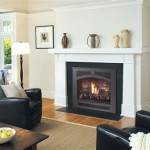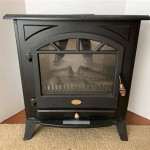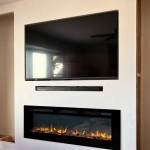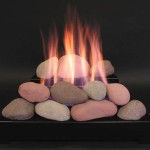Shelf Above Fireplace: Design, Functionality, and Safety Considerations
A shelf above a fireplace, often referred to as a mantel shelf, serves as a prominent architectural feature in many homes. It offers a versatile space for display, storage, and aesthetic enhancement. However, its placement above a heat source necessitates careful consideration of design, functionality, and, most importantly, safety. This article explores these aspects in detail, providing a comprehensive understanding of the shelf above fireplace and its role in interior design.
The historical significance of the mantel shelf is deeply rooted in practicality. Originally, mantels served as protective barriers against the spread of fire from the fireplace into the rest of the room. They were constructed from non-combustible materials like stone or brick. Over time, the functional aspect evolved, and the mantel shelf gained prominence as a decorative element. Today, it provides a readily accessible platform for displaying artwork, photographs, seasonal decorations, and other personal items, contributing significantly to the overall ambiance of a living space.
Modern interpretations of the shelf above the fireplace incorporate a wide range of materials, from traditional wood to contemporary metal and composite options. The design choices are often dictated by the architectural style of the home, the homeowner's personal preferences, and the intended function of the shelf. Whether integrated seamlessly into the fireplace surround or installed as a standalone feature, the shelf above the fireplace presents a unique opportunity to personalize a room and create a focal point.
Design Considerations for a Shelf Above Fireplace
The design of a shelf above the fireplace involves several key factors, including material selection, dimensions, style, and integration with the fireplace surround and overall room décor. Each of these elements contributes to the shelf's aesthetic appeal and its ability to complement the existing architectural features.
Material Selection: The choice of material is crucial, not only for aesthetic reasons but also for safety and durability. Wood is a common choice, offering warmth and versatility in terms of stain and finish. However, it is essential to select hardwoods that are less prone to warping or cracking due to heat exposure. Other options include stone, concrete, metal, and composite materials. Stone and concrete provide a more rustic or contemporary feel, while metal offers a sleek and modern aesthetic. Composite materials can mimic the look of wood or stone while providing enhanced durability and heat resistance.
Dimensions: The dimensions of the shelf, including its length, depth, and thickness, should be proportional to the size of the fireplace and the surrounding wall. A shelf that is too small may appear insignificant, while one that is too large could overwhelm the space. Generally, the shelf should extend a few inches beyond the width of the firebox on each side. The depth of the shelf should be sufficient to accommodate the intended display items, but it should not protrude excessively into the room. The thickness of the shelf is also an important consideration, as it contributes to the overall visual weight and stability.
Style: The style of the shelf should align with the overall design aesthetic of the room. A traditional home may benefit from a shelf with ornate carvings and a rich wood finish, while a modern space may call for a minimalist design with clean lines and a neutral color palette. The style of the shelf can also be influenced by the type of fireplace, whether it is a traditional wood-burning fireplace, a gas fireplace, or an electric fireplace. In some cases, the shelf may be integrated into the fireplace surround, creating a seamless and cohesive design.
Integration: The integration of the shelf with the fireplace surround and the surrounding wall is essential for creating a harmonious and visually appealing design. The shelf should appear to be a natural extension of the fireplace, rather than an afterthought. The color and texture of the shelf should complement the fireplace surround and the wall, creating a sense of visual continuity. Careful consideration should also be given to the installation of the shelf, ensuring that it is securely attached to the wall and that it is properly aligned with the fireplace.
Functionality and Usage of a Shelf Above Fireplace
Beyond its aesthetic appeal, the shelf above a fireplace serves several functional purposes. It provides a platform for displaying decorative items, storing essential items, and even concealing unsightly elements such as wiring or ventilation. Understanding the various ways in which the shelf can be used can inform the design process and maximize its utility.
Display Space: The primary function of the shelf above the fireplace is to provide a display space for decorative items. This can include artwork, photographs, sculptures, vases, and seasonal decorations. The shelf can be used to create a focal point in the room, drawing attention to the fireplace and highlighting the homeowner's personal style. The arrangement of items on the shelf should be carefully considered, balancing visual weight and creating a sense of harmony. It is important to avoid overcrowding the shelf, as this can detract from its aesthetic appeal.
Storage Solution: In some cases, the shelf above the fireplace can also serve as a storage solution. This is particularly useful in smaller homes or apartments where space is limited. The shelf can be used to store books, magazines, DVDs, or other items that are frequently used in the living room. Baskets or decorative boxes can be used to conceal smaller items and keep the shelf organized. When using the shelf for storage, it is important to ensure that the items are not flammable and that they are stored securely.
Concealing Elements: The shelf above the fireplace can also be used to conceal unsightly elements such as wiring, ventilation, or other mechanical components. This can be achieved by installing a false back or a decorative panel behind the shelf. The concealed space can also be used to house electronic devices such as cable boxes or streaming devices, keeping them out of sight and maintaining a clean and uncluttered look. When concealing elements behind the shelf, it is important to ensure that there is adequate ventilation to prevent overheating.
Seasonal Decorations: The shelf above the fireplace is a popular spot for displaying seasonal decorations. During the holiday season, it can be adorned with garlands, stockings, and other festive items. In the spring, it can be decorated with flowers, plants, and other symbols of renewal. The shelf provides a readily accessible platform for changing decorations throughout the year, allowing homeowners to create a warm and inviting atmosphere that reflects the current season.
Safety Considerations for a Shelf Above Fireplace
Safety is paramount when designing and installing a shelf above a fireplace. The proximity of the shelf to a heat source presents a potential fire hazard, and it is essential to take precautions to minimize the risk of fire and ensure the safety of the occupants. These considerations include material selection, clearance requirements, and the placement of flammable items.
Material Flammability: The flammability of the shelf material is a critical safety concern. Wood is a combustible material and should be treated with fire-retardant coatings to reduce the risk of ignition. Non-combustible materials such as stone, concrete, and metal are inherently safer choices, as they are less likely to ignite even when exposed to high temperatures. When selecting a material, it is important to consider its fire resistance rating and to ensure that it meets local building codes.
Clearance Requirements: Maintaining adequate clearance between the shelf and the firebox is essential for preventing overheating and reducing the risk of fire. Building codes typically specify minimum clearance requirements for combustible materials near fireplaces. These requirements vary depending on the type of fireplace, the type of fuel used, and the type of material used for the shelf. It is important to consult local building codes and to follow the manufacturer's instructions for the fireplace when determining the appropriate clearance. A general guideline is to maintain at least 12 inches of clearance between the top of the firebox opening and the bottom of a wood mantel shelf. This distance may need to be greater depending on the specific fireplace and mantel shelf design.
Placement of Flammable Items: The placement of flammable items on or near the shelf above the fireplace should be carefully considered. Items such as candles, paper, fabric, and decorations should be kept away from the heat source to prevent ignition. Candles should be placed in glass containers or on heat-resistant surfaces to contain any wax spills. Paper and fabric items should be stored away from the fireplace to prevent them from catching fire. Decorations made of flammable materials, such as dried flowers or pine cones, should be avoided altogether. Furthermore, ensure any electrical cords do not come into contact with the fireplace or hot surfaces.
Heat Shields: In situations where adequate clearance cannot be achieved or where there is a concern about excessive heat exposure, a heat shield can be installed between the fireplace and the shelf. A heat shield is a non-combustible barrier that deflects heat away from the shelf, reducing the risk of ignition. Heat shields are typically made of metal or ceramic and are designed to be installed behind the shelf. The effectiveness of a heat shield depends on its material, thickness, and design. It is important to select a heat shield that is specifically designed for use with fireplaces and to follow the manufacturer's instructions for installation.
Regular Inspections: Regular inspections of the shelf above the fireplace are essential for identifying potential safety hazards. The shelf should be inspected for signs of warping, cracking, or discoloration, which could indicate excessive heat exposure. The fireplace should also be inspected for any signs of damage or malfunction. Any potential safety hazards should be addressed promptly to prevent accidents. It is advisable to have the fireplace and chimney professionally inspected annually to ensure that they are in good working order.

Fireplace Mantel Wikipedia

Collection Of Premium Wood Fireplace Mantels Dogberry

Mantel Shelves Fireplace Shelf Scarlett Fireplaces

Mantle Vs Mantel What S The Difference Merriam Webster

Floating Fireplace Shelf Experience Elegance With Oak

30 Tips To Diy And Decorate Your Fireplace Mantel Shelf

30 Tips To Diy And Decorate Your Fireplace Mantel Shelf

Adding Grace And Charm With Fireplace Mantels Inviting Home

Fireplace Shelves Natural Oak And Wooden Mantels Bonfire

7 Contemporary Fireplace Mantel Design Ideas For Interior Designers








